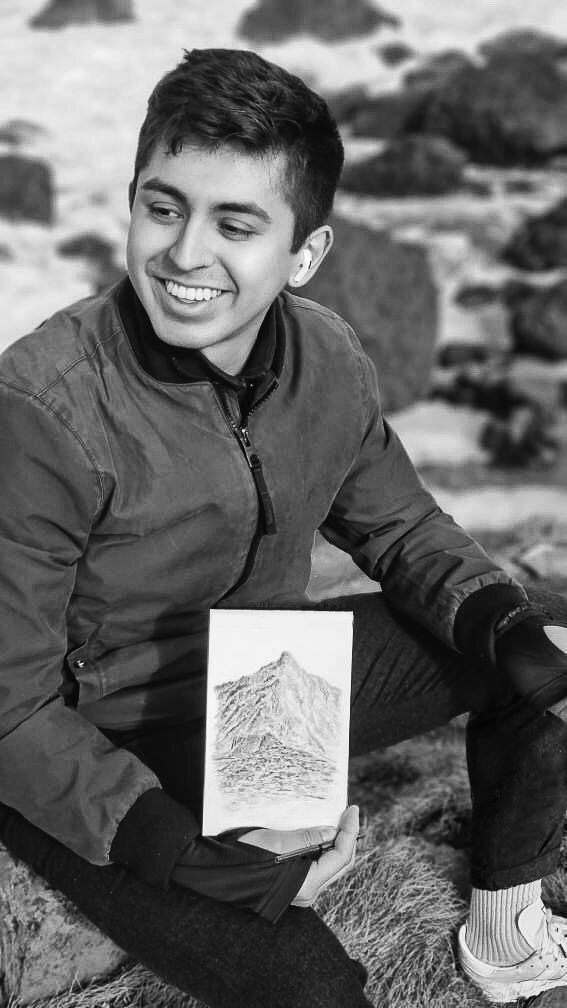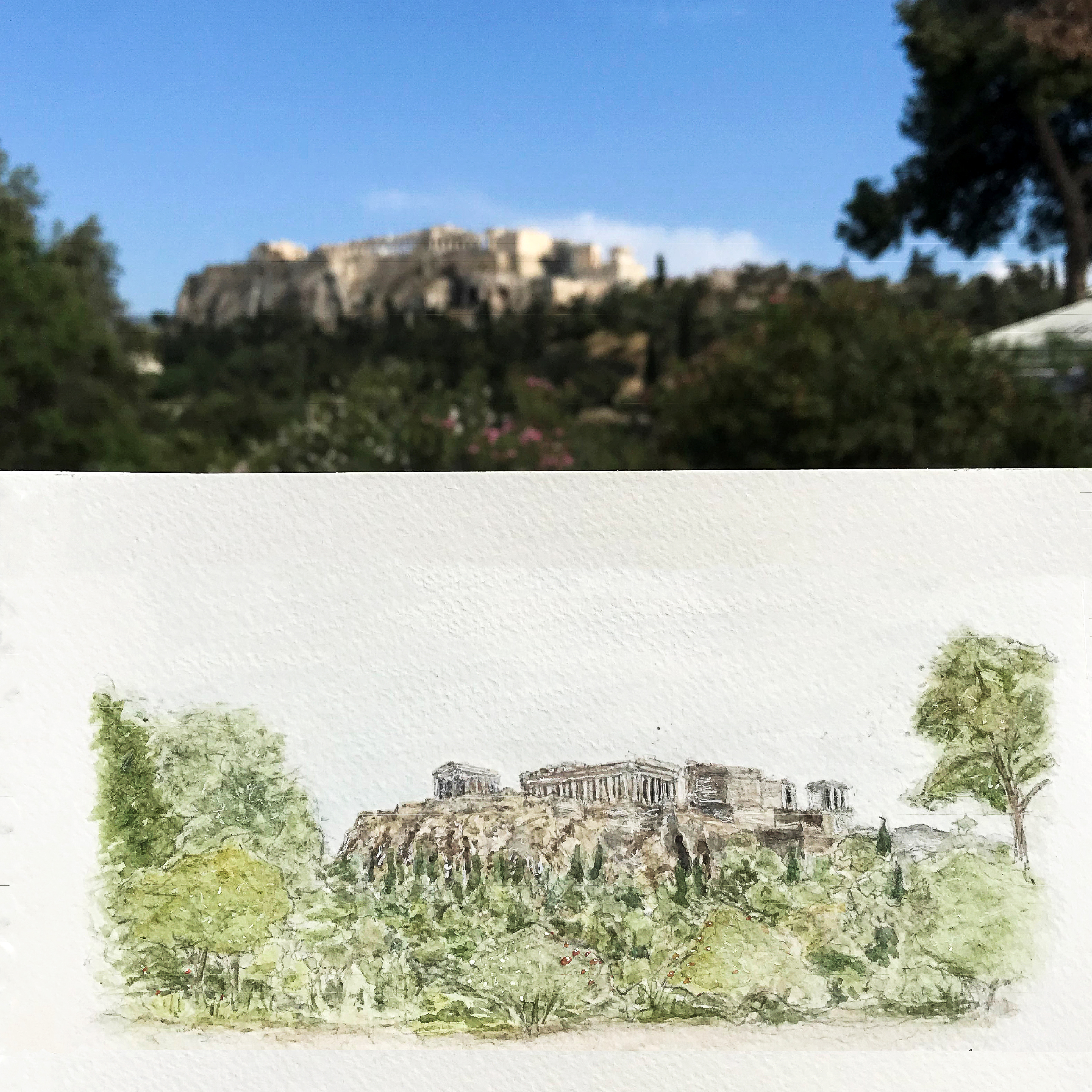ABOUT THE ARTIST

Bryan plein air painting at the Giants Causeway, Northern Ireland, 2022
Bryan Cordova, born 1998, is an Ecuadorian-American artist and architect.
After completing his five-year Bachelor of Architecture degree at the age of 22, Bryan ventured off solo-traveling around the world carrying only a backpack and a few pocket-sized sketchbooks. During the journey he began to share and sell his art to the public across the numerous cities and countries he visited. By age 24, Bryan had traversed five continents exploring over 40 countries while meeting many warm-hearted and incredible people that have inspired him to continue drawing.
Bryan grew up and resides in suburban New York. He specializes in creating Pen & Ink architectural drawings working as much as possible on location. His plein air observations, often spanning hours or even days, stylistically evoke details of life capturing the surrounding architecture with a distinct sense of time, energy and place.
Currently Bryan is combining his architectural training and artistic skills into a full-time career. Ongoing projects involve curating and exhibiting his expansive collection of drawings from across the world, starting with and showcasing them in New York City.
EN PLEIN AIR
Whenever able Bryan pulls inspiration to draw as much as possible by working outdoors and through his live observations.
Whether capturing architectural buildings, iconic landmarks, urban streets or natural landscapes on paper, Bryan does his best to begin whichever project he can at that primary location.
After thousands of travel sketches made on the go and countless hours devoted into his professional craft, Bryan has been able to develop a fine skillset to work directly onto the page straight from Pen & Ink. His drawings are entirely drawn free-hand and begun at his standing eye-level perspective.
Frequently Asked Questions
Here’s some of the most commonly asked questions I’ve received on social media and through numerous in-person encounters, both by everyday people and artists across all kinds of environmental settings.
MATERIALS / FRAMING
Recently a lot of my work has involved exploring all different kinds of pen mediums. I’ve found Staedler’s fineliner series (.05) allow for great precision while their chisel tip black-ink pen allow for flexibility when it comes to creating greater contrast in my drawings.
Currently I’m experimenting with red-ink and white-ink gel pens and rollers. The Pilot Pen V-5 has given a lot of vibrancy to my artwork through the dashes and shades of red it yields which I find much more creative than the usual black and white drawings of my past.
Sakura white-ink and gold-ink rollers have given promising results when drawing on tinted paper. I find their utilize for emphasizing details and highlights on the page.
Moleskin plain-page notebooks for advanced drawing levels.
MUJI A6 red-binding plain-page notebooks for beginner drawing levels. Dotted-page notebooks can be useful here especially if your new to exploring how to draw architecture.
I find a lot of elegance in keeping art framed in a neutral color palette.
If my drawing is almost entirely in black and white, then I would suggest adding a black minimalist frame to it. If the art print or original piece was made on tan paper, for example, then I would suggest displaying it in a brown, wood-like frame.
If the drawing you purchased is graphic in color, I would advice (as with my above suggestions) adding a matted window frame unless it was sold already matted by myself. This mat which commonly can be bought at art supply stores provides for a nice border to allow the piece of art to ‘breath.’ Usually a one to two-inch single mat on all four sides will be enough to compliment the drawing.
DRAWING / TIPS
For the longest time I worked almost exclusively drawing on standard size A6 postcard paper. In the beginning I only used MUJI’s 0.38 gel ink pen. Its standard fine point and economical replaceable ink cartridges made for the most efficient and creative way for me to work, travel light and master my foundational skills in drawing buildings.
Practice is key.
My biggest recommendation to leaning how to draw in this style especially for beginners is to first familiarize themselves with common drawing terminology such as ‘one-point’ and ‘two-point’ perspectives. Likewise, its important to understand how these branch into other drawings concepts such as understanding what and where to locate one’s horizon line and vanishing points. These will in turn influence and push one to play with the ideas of creating proportion and scale.
At some point later this year I hope to release short-video tutorials on YouTube for how I go about my drawing process in creating perspectives. For the time being, you can check out my Instagram story highlights under ‘Drawing Tips’ for a general idea on how I usually approach this style.
Photos tend to flatten three-dimensional space. Whenever I work, I try to do as much drawing as possible on location as it pushes me limit my distractions and also be able to engage with the world and surrounding environment I am in.
Yes! Though I much prefer to draw static subjects as I’m able to recreate finer detail in that work.
This is a common thing I’ll hear from many people.
At one point I used to feel this way about painting however with a lot of time, perseverance, consistent effort and belief in oneself (and the support of those closest to your circle), I think one can achieve incredible things. At the end of the day it’s all a matter of mindset and practice.


